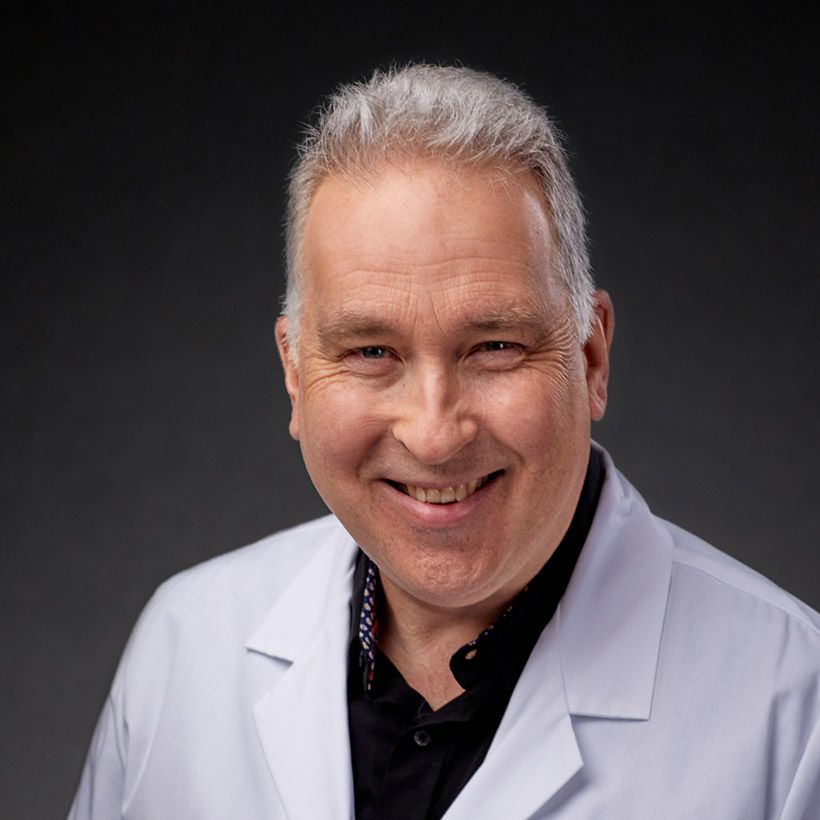The Impact of Advancements on the Current and Future Multiple Myeloma Landscape
In an interview with Targeted Oncology, Jeffrey R. Schriber, MD, discussed the impact of new advancements in the treatment of multiple myeloma, like the use of BiTE cells, on the current and future landscape for this patient population.
Jeffrey R. Schriber, MD

Treating patients with multiple myeloma has evolved over the years from a challenging field to one with better opportunity for a helpful treatment for these patients. Advancements have come from the use of more therapies as either a triplet or quadruplet regimen, to now considering the use of chimeric antigen receptors [CAR] T-cells or BiTE cells to further impact treatment.
How clinicians have looked to assess these treatments has also evolved with focus in the clinic on the results of patient’s progression-free survival (PFS) and minimal residual disease (MRD) rates during and after treatment.
In an interview with Targeted Oncology, Jeffrey R. Schriber, MD, director of Hematologic Malignancies at the Cancer Treatment Centers of America in Phoenix, Arizona, discusses these developments in the treatment of patients with multiple myeloma and where he sees the field heading.
What is the current treatment landscape for patients with multiple myeloma?
It continues to evolve, and myeloma is probably the most exciting field to be in just because we continue to see things change over time. We have a pretty good sense for what we should start with, but even there is a debate whether you give a triplet [regimen] or do 4 drugs up front.
Most of us are still leaning towards a transplant, but now there's a lot of questions [in the space]. Should you do transplant early vs late? And then when patients relapse, the question is what should you do? And I think earlier and earlier, what we're seeing is the incorporation of different therapies that we've got available. Everyone's very excited about CAR T-cells, but CAR T-cells take time to process and sometimes there are issues with this, but the BiTE cells, I think, are very exciting. And what we're seeing now is the combination of BiTE cells with other therapies, which I suspect will be where we'll go in the future.
How has the field evolved over time? What are some of the key advances that you've seen in the last few years?
Transplant, to my mind, remains a major importance but we've now got a randomized trial that shows it doesn't improve overall survival, but PFS is close to 2 years better, suggesting that [transplant] still maintains its important efficacy [and role in treatment].1 Moreover, we're now seeing data that shows we can use this in older patients and, of course, with a [patient population that has a] median age of 70 we need to be doing this in patients that are over 70.
Please discuss ongoing research in this field.
I think the most exciting [research], as I said, is the BiTE cell combination therapies and using that earlier and earlier.2 What we see is that [patients do] pretty well up front and then when they fail, we have a sense of things to do, as we have a whole plethora of options. But I think combining [treatment] with BiTE cells is particularly exciting.
What do you think has been the most impactful update in the myeloma landscape this year?
I think probably the large, randomized trial comparing early to late transplant, that was very exciting.3 And you can look at in 2 ways; if the non-transplanters go well then there's no survival advantage, but then if the transplanters go almost 2 years with progression free survival, then after a short follow up, we think that's going to translate into patients doing well for a long period of time.
What challenges still exist?
Well, I think sequencing [of multiple therapies] is really the key. I think we have a good sense of what we should do up front, but I think sequencing will be important in how to use these drugs in combination. And whether we can get away in terms of not having patients on maintenance forever. I think that will be important as we learn to utilize the data from [minimal residual disease] studies that will become available.
What was the most exciting practice changing data, for you, that was presented at the 2022 ASH Annual meeting?
The big shift [happening], I would say, is the shift away from chemotherapy immunotherapy. We're seeing that in [treatment for patients with chronic lymphocytic leukemia], and we're seeing that in [treatment for patients with] multiple myeloma, and we're really seeing that in a variety of different sources. I think that's really exciting [coming out of this year’s ASH meeting].
References:
1. Richardson PG, Jacobus SJ, Weller EA, et al; DETERMINATION Investigators. Triplet Therapy, Transplantation, and Maintenance until Progression in Myeloma. N Engl J Med. 2022 Jul 14;387(2):132-147. doi: 10.1056/NEJMoa2204925
2. Kegyes D, Constantinescu C, Vrancken L, et al. Patient selection for CAR T or BiTE therapy in multiple myeloma: Which treatment for each patient? J Hematol Oncol. 2022 Jun 7;15(1):78. doi: 10.1186/s13045-022-01296-2
3. Dunavin NC, Wei L, Elder P, et al. Early versus delayed autologous stem cell transplant in patients receiving novel therapies for multiple myeloma. Leuk Lymphoma. 2013 Aug;54(8):1658-64. doi: 10.3109/10428194.2012.751528
Enhancing Precision in Immunotherapy: CD8 PET-Avidity in RCC
March 1st 2024In this episode of Emerging Experts, Peter Zang, MD, highlights research on baseline CD8 lymph node avidity with 89-Zr-crefmirlimab for the treatment of patients with metastatic renal cell carcinoma and response to immunotherapy.
Listen
Key Trials From ASH 2024 Impact Treatment for Plasma Cell Disorders Going Forward
February 20th 2025Peers & Perspectives in Oncology editorial board member Marc J. Braunstein, MD, PhD, FACP, discussed the significant advancements in multiple myeloma treatment at the 2024 ASH Annual Meeting and Exposition.
Read More